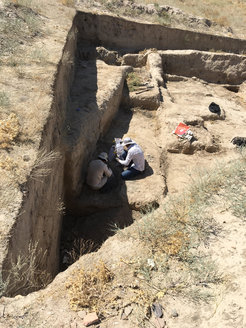First Farmers of Inner Asia

The popular image of Inner Asia as the realm of the horse-back warrior nomads has permeated the academic literature for nearly a century. In doing so it has directed the nature of research questions asked by academics. Partially due to the generally accepted idea that people in this part of the world were ‘nomads,’ archaeobotanical methods have been largely lacking. While archaeologists have studied farming systems in the ancient sedentary agricultural zones in southern Central Asia (Turkmenistan, Tajikistan, and Uzbekistan), which date back to the sixth millennium B.C., the role of farming in the economy of people in eastern Kazakhstan and western China in the past has received little attention. Essentially, why look for farming if it is already acceptedthat people in the region were pastoralists? However, starting in 2006, with increased archaeobotanical investigation in eastern Kazakhstan, Spengler spearheaded the “First Farmers of Inner Asia” program.
As a result of this growing research focus, it is becoming increasingly clear that domesticated grains were known in the region at least as far back as the third millennium B.C. and that a mixed agropastoral economy was present by the mid-second millennium B.C. Inner Asia was not only the crossroads of the ancient world, but it was also a center of innovation and cultural development; in this sense, understanding the nature of early economy in the region directly feeds into our understanding of the prehistory of the “Old World.”
